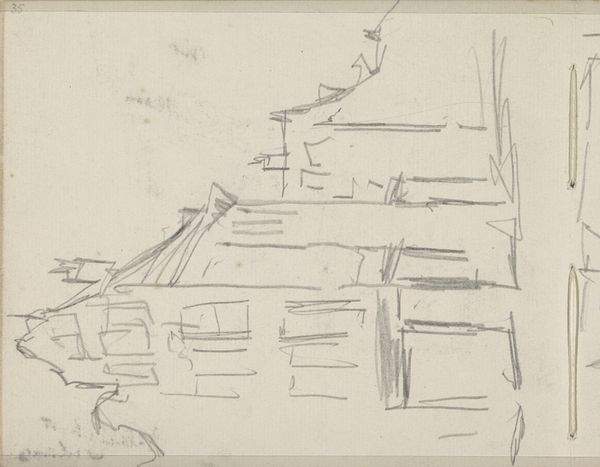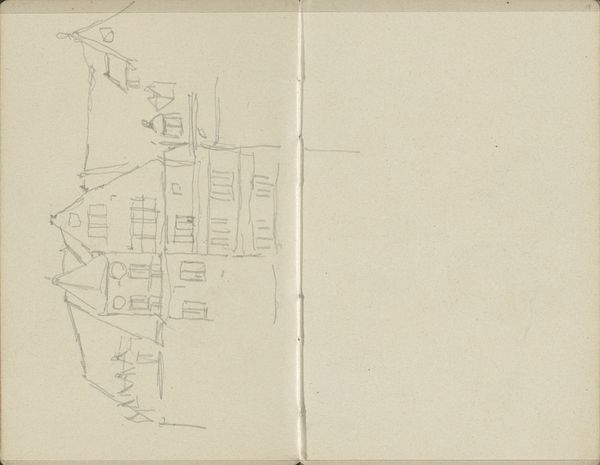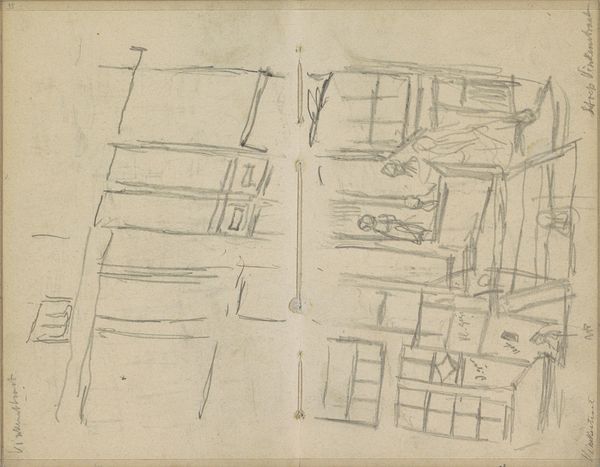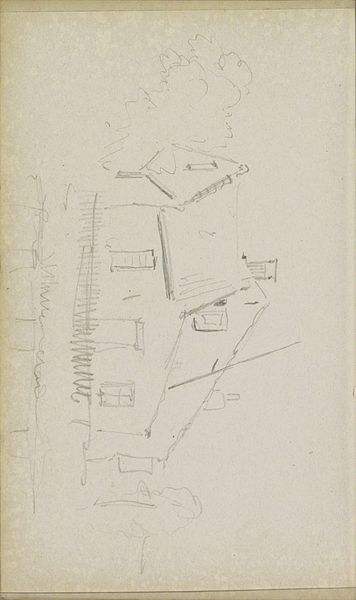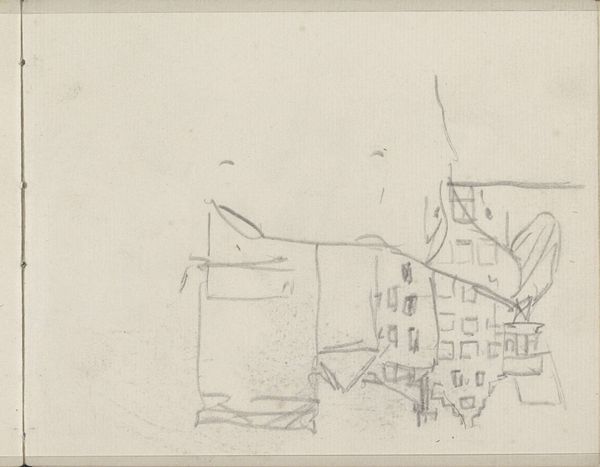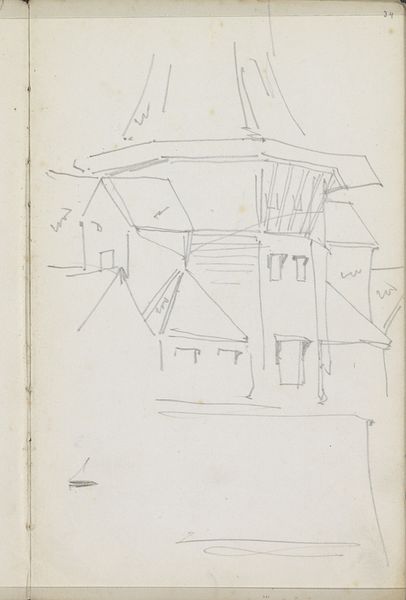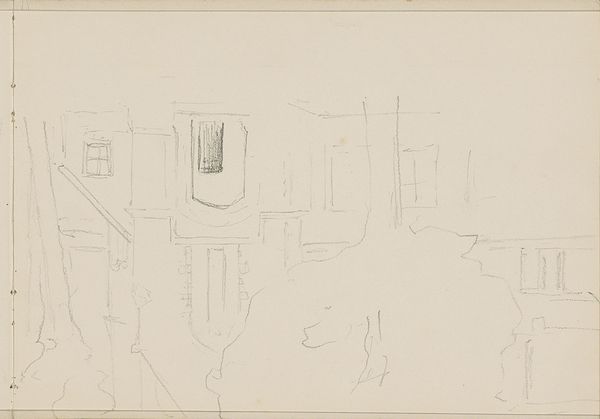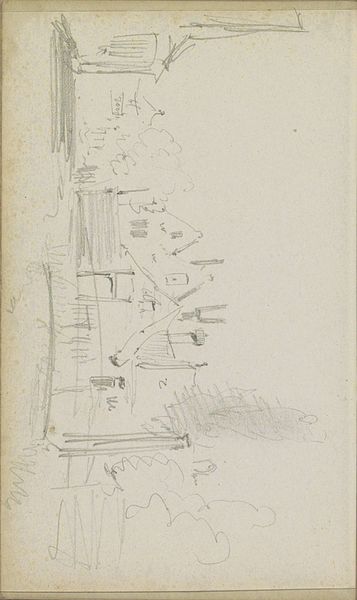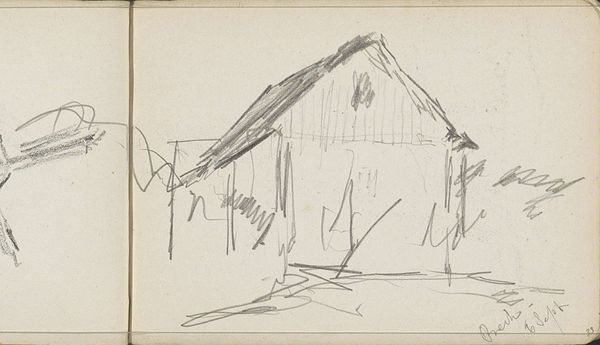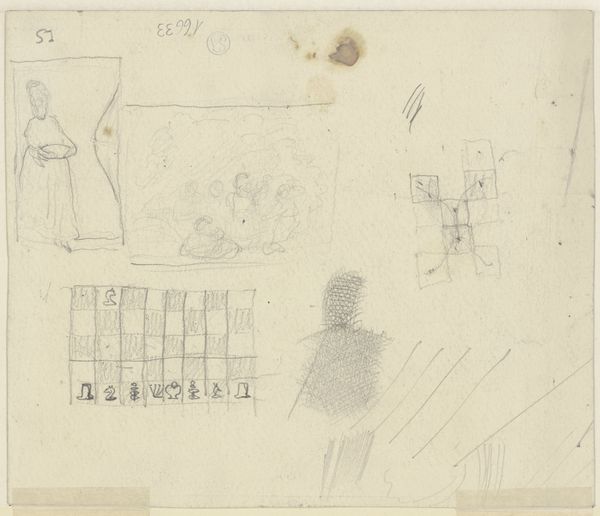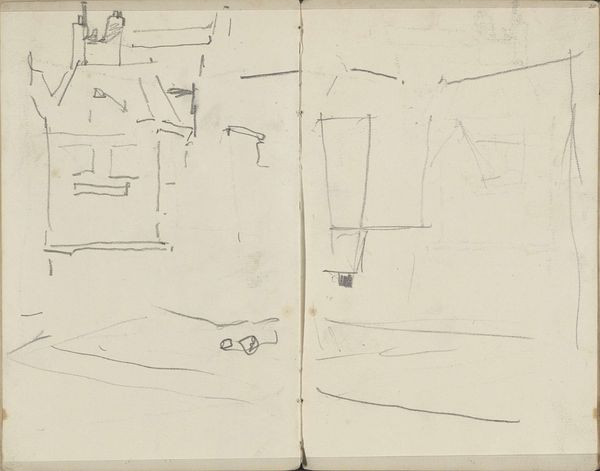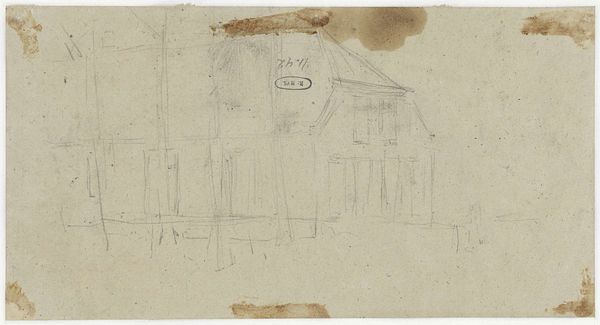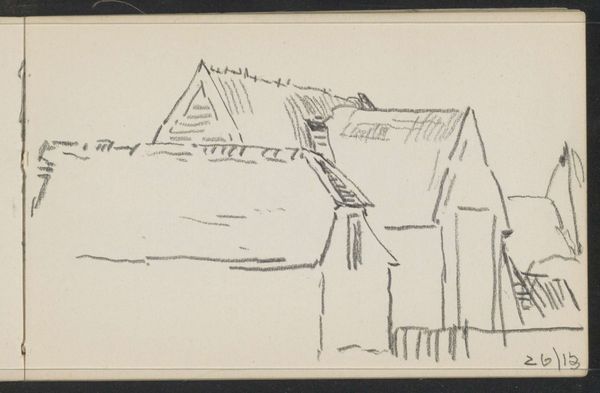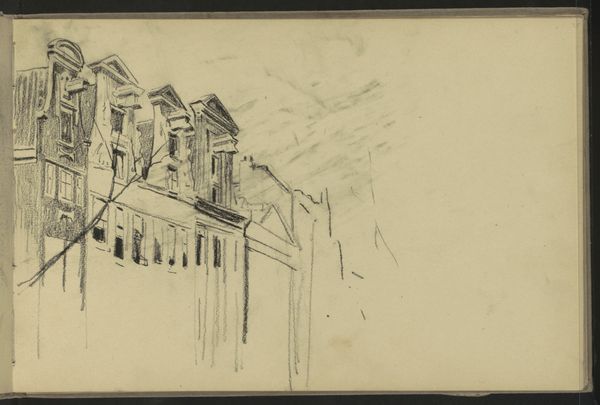
Voorgevel van het Koninklijk Paleis te Amsterdam c. 1886 - 1903
0:00
0:00
Copyright: Rijks Museum: Open Domain
Curator: Today we're looking at a sketch by George Hendrik Breitner, dating from around 1886 to 1903. The title is "Voorgevel van het Koninklijk Paleis te Amsterdam," or "Facade of the Royal Palace in Amsterdam." Editor: My first impression is rawness, almost urgent in its simplicity. You see the skeletal structure of this grand building laid bare, reduced to the essential lines capturing the grand facade, though I’d hesitate to call it majestic, just now. Curator: It's interesting to see Breitner, known for his atmospheric cityscapes, focusing on such a recognizable symbol of Dutch power. What does that tell us? Is it a critique, a study, or a casual record? Editor: I lean toward 'study'. Look at the pencil strokes - economical and precise. He is interested in capturing form, the arrangement of elements and how quickly he was able to do it—the raw materiality of it. I can almost hear the scrape of graphite on paper. Curator: Breitner moved amongst the circles where these centres of power existed, didn't he? He had access and privilege—did he perhaps perceive, from this elevated position, a hollowness, which is why he gives it a rather unfinished and quick impression, as you suggest? Editor: Maybe. I mean, think about the kind of labor that went into building and maintaining a palace like this. All those bricks, that stone… the immense disparity between the labor, its source, and the palace itself. The rapid execution of this sketch gives the suggestion of seeing the structure beyond all this, stripped to just one, fast vision. Curator: Yet, as a palace, its front symbolizes something more than physical work, power as well as wealth! It’s been said the artist focused more on capturing fleeting moments, avoiding the creation of art that pandered to dominant political narratives. In the way he approached his subjects and even their framing within a canvas, he attempted to avoid obvious cultural narratives and let them emerge on their own. Editor: Precisely, but maybe this study serves the purpose to do just that. Look for these raw qualities or let this approach change your understanding. Either way, there is a great material conversation going on in front of us. Curator: So, a quickly dashed-off study of power—rendered hastily. Editor: It has certainly left me thinking of how the material reality of creating art connects, however distantly, with societal power structures.
Comments
No comments
Be the first to comment and join the conversation on the ultimate creative platform.
